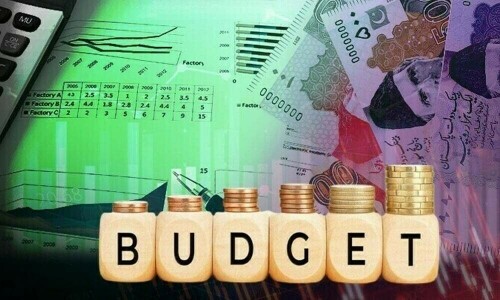Sindh Unveils Rs3.45 Trillion Budget for FY2025-26
The Sindh government, led by Chief Minister Syed Murad Ali Shah, presented its budget for the fiscal year 2025-26 on Friday, outlining significant allocations and initiatives across various sectors.
The total outlay for FY26 is estimated at Rs3.45 trillion, marking a substantial 12.9% increase from the revised estimate of Rs3.05 trillion for FY25.
“This financial plan is crucial for unlocking Sindh’s full potential,” stated Murad Ali Shah, emphasizing its focus on comprehensive and sustainable progress.
Key Points of the Sindh Budget 2025-26:
The Chief Minister highlighted the government’s dedication to improving society, modernizing infrastructure, and fostering economic self-reliance.
Development Expenditure
The provincial government has earmarked Rs1.02 trillion for development projects in FY26.
Salaries and Pensions
- Salaries for government employees in Grades 1-16 will increase by 12%.
- Employees in Grades 17-22 will receive a 10% raise in their salaries.
- Pensioners will see an 8% increase in their monthly pensions.
Current Expenditures
The Sindh government has allocated Rs2.15 trillion for current expenditures, which is a 12.4% increase from the previous year’s Rs1.92 trillion. This surge is attributed to factors such as inflationary pressures, grants for hospitals and universities, employee benefits, and growing pension obligations.
Education Sector
The education budget has been boosted by 12.4% to Rs523.73 billion, representing 25.3% of the total current expenditures.
- Primary education sees an increase from Rs136.2 billion to Rs156.2 billion.
- Secondary education has been allocated Rs77.2 billion, up from Rs68.5 billion.
Additionally, the government plans to recruit 4,400 new educators and staff. Initiatives include establishing four IBA community colleges, dedicated funding for over 34,100 primary schools, and a Rs2 billion allocation for the Sindh Educational Endowment Fund to aid underprivileged students.
Differently-Abled Persons
The budget for the development program for differently-abled individuals has risen from Rs11.6 billion to Rs17.3 billion to facilitate assistive technologies, scholarships, and NGO partnerships.
Healthcare
The health sector’s budget has been increased by 8%, from Rs302.2 billion to Rs326.5 billion. This includes Rs146.9 billion in grants to healthcare facilities and Rs19 billion for the Sindh Institute of Urology and Transplantation (SIUT).
Other key allocations involve Rs16.5 billion for the Peoples Primary Healthcare Initiative (PPHI), Rs10 billion for a new hospital in Larkana, and the expansion of ambulance services and mobile diagnostic units in rural areas.
Annual Development Programme (ADP)
The Sindh government has decided to reduce the Annual Development Programme (ADP) for FY26 by 20% to Rs520 billion, citing anticipated reductions in federal transfers. The program includes 475 new schemes focusing on flood-affected regions, renewable energy, less developed districts, clean water, and sanitation.
Karachi Development
The government is placing a special focus on Karachi’s development, promising upgrades to infrastructure, roads, sewerage, and water supply. Urban transport will be expanded with 50 electric buses initially, followed by another 100 by August 2025.
The Yellow Line BRT project is nearing completion, while the Red Line is over 50% complete. Other initiatives include expanding the Karachi Safe City Project with AI-enabled CCTV cameras, upgrading the Korangi Causeway Bridge and Shahrah-e-Bhutto, restoring historical sites, improving business districts, and constructing major roads.
Digital Governance
The Sindh government is also prioritizing digital governance, launching a central KPI monitoring dashboard for real-time project tracking. Land records will be transitioned to blockchain for enhanced transparency. A digital birth registration system aims for full coverage by 2028, integrated with health and education databases.
Agriculture Sector
The Benazir Hari Card will be introduced to provide subsidies and modern machinery to over 200,000 farmers. Subsidies for drip irrigation will promote environmentally safe farming, alongside cluster farming projects under public-private partnerships. A feasibility study is underway for establishing a Sindh Cooperative Bank to offer interest-free loans to farmers.
Social Welfare and Empowerment
- Decentralization of education budget to the school level.
- Direct funds for operational expenses for headteachers.
- Improved facilities and increased stipends for persons with disabilities.
- New rehabilitation centers.
- Youth development centers across Sindh for skills training, career counseling, and digital literacy programs.
Tax Relief Measures
The government will eliminate five taxes, including professional tax and entertainment duty, reduce motor vehicle tax, and introduce a negative list system to simplify sales tax.
Additional Relief Measures
- Ad-hoc relief allowance of 12% for employees in Grades 1–16.
- 10% ad-hoc relief for employees in Grades 17–22.
- Increase in conveyance allowance for differently-abled employees.
- Full payment of pending pensions.
- Special grants for lawyers, journalists, and minorities under welfare and development initiatives.



Comments (0)
No comments yet. Be the first to comment!
Leave a Comment